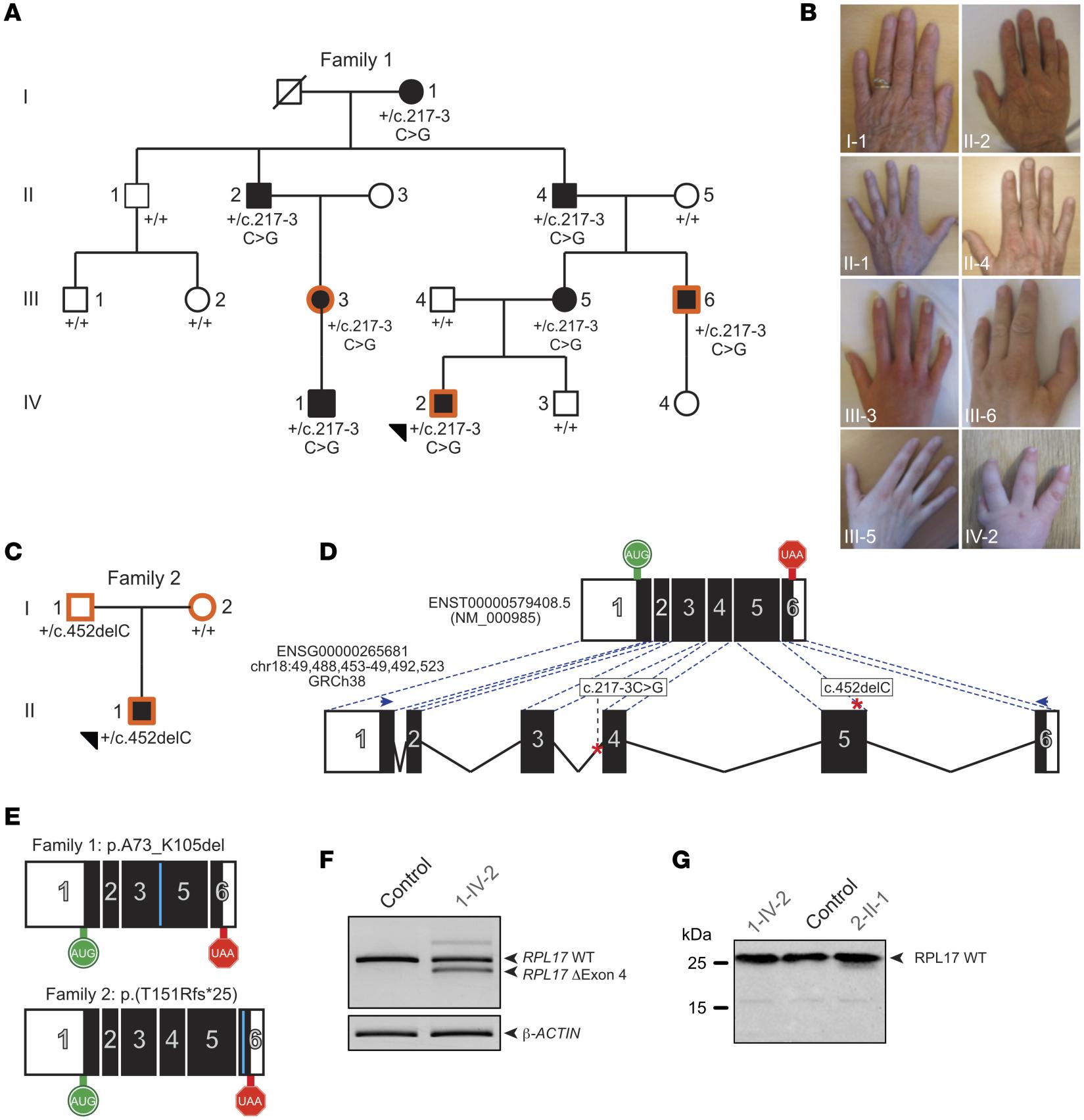Fig. 1 Pathogenic variants in RPL17 cause Diamond-Blackfan anemia. (A) 4-generation Swiss pedigree (family 1) harboring a heterozygous c.217-3C>G variant in RPL17. Filled shapes, affected individuals; unfilled shapes, unaffected individuals; orange outline of shapes, exome sequencing was performed on DNA from that individual; “+”, WT allele; black triangle, index case. Individuals for whom no genotype is indicated means that a DNA sample was unavailable. (B) RPL17 mutation carriers of family 1 display digit phenotypes including fifth finger hypoplasia (1-I-1, 1-II-2, 1-III-3, 1-II-1, 1-II-4, and 1-III-5) and absent thumbs (1-III-6 and 1-IV-2). (C) Family 2 harbors a heterozygous c.452delC RPL17 variant and displays incomplete penetrance. Colors and symbols are the same as indicated in panel A. (D) Schematic of the WT human RPL17 locus (bottom) and mRNA (top). Black boxes, coding exons; white boxes, untranslated regions; solid black lines, introns; green “AUG”, start codon; red “UAA”, stop codon; and variants identified in this study, red (pathogenic) or green (benign) asterisks. (E) RPL17 variants identified in each of families 1 and 2 produce aberrant mRNA transcripts; blue bars in the schematic highlight the site of alteration. (F) RT-PCR products separated on agarose gel indicating that c.217C>G results in an in-frame deletion of exon 4. (G) Immunoblot of RPL17 protein (21.4 kDa) in LCLs derived from cases (gray) and unaffected individuals (black bold) from families 1 and 2.
Image
Figure Caption
Acknowledgments
This image is the copyrighted work of the attributed author or publisher, and
ZFIN has permission only to display this image to its users.
Additional permissions should be obtained from the applicable author or publisher of the image.
Full text @ JCI Insight

